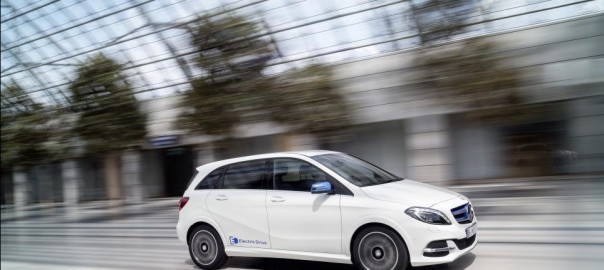Stuttgart. Locally emission-free, significantly more eco-friendly over its complete life cycle thanks to 64 percent lower CO2 emissions than the equivalent B 180 petrol model, generous in terms of space and range (200 km) and still dynamic on the road (output of 132 kW): the B-Class Electric Drive is a convincing proposition in all sorts of ways. Its high environmental compatibility has now also been confirmed by the inspectors at the TÜV Süd technical inspection authority, who have awarded the electric-drive Sports Tourer from Mercedes-Benz the environmental certificate in accordance with ISO standard TR 14062. This certification is based on a comprehensive life-cycle assessment of the B-Class Electric Drive, documenting every detail of relevance for the environment.
“The fact that we are able to integrate the electric motor and batteries into a perfectly ‘normal’ B-Class does not only mean that we can assemble the Electric Drive alongside the other B-Class vehicles on one production line, but almost more importantly means that our customers do not have to make any compromises at all in terms of spaciousness, safety or comfort”,
explained Professor Dr Herbert Kohler, Chief Environmental Officer at Daimler AG.
“The B-Class Electric Drive is an important milestone along our journey towards emission-free driving.”
Mercedes-Benz analyses the environmental compatibility of its models throughout their entire life cycle – from production, through their long years of service, to recycling at the end of their lives. This analysis goes far beyond the legal requirements. The Environmental Certificate and supplementary information are made available to the public as part of the “Life Cycle” documentation series, which can be accessed at http://www.mercedes-benz.com.
Over its entire life cycle, comprising production, use over 160,000 kilometres and recycling, the B-Class Electric Drive produces emissions of CO2 that are 24 percent (7.2 tonnes – EU electricity mix) or 64 percent (19 tonnes – hydroelectricity) lower than those of the B 180 – despite the higher emissions generated during the production process. This is due primarily to the exceptional efficiency of the electric motor, which gives rise to significant advantages during the use phase. One key factor here is its ingenious energy management system: the optional radar-based regenerative braking system, for example, ensures the optimal recuperation of braking energy back into the battery. This further enhances the efficiency of the drive system and enables even greater ranges.
CO2 emissions during the use phase here depend upon the method used to generate electricity. In 160,000 kilometres of driving use, the new B-Class Electric Drive (NEDC combined consumption from 16.6 kWh/100 km) produces 11.9 tonnes of CO2, assuming use of the EU electricity mix. When electricity generated by hydroelectric means is used to power the electric vehicle, the other environmental impacts relating to electricity generation are also almost entirely avoided. The B 180 (NEDC combined consumption 5.4 l/100 km) on the other hand emits 23.8 tonnes of CO2 during the use phase.
Source: Daimler
